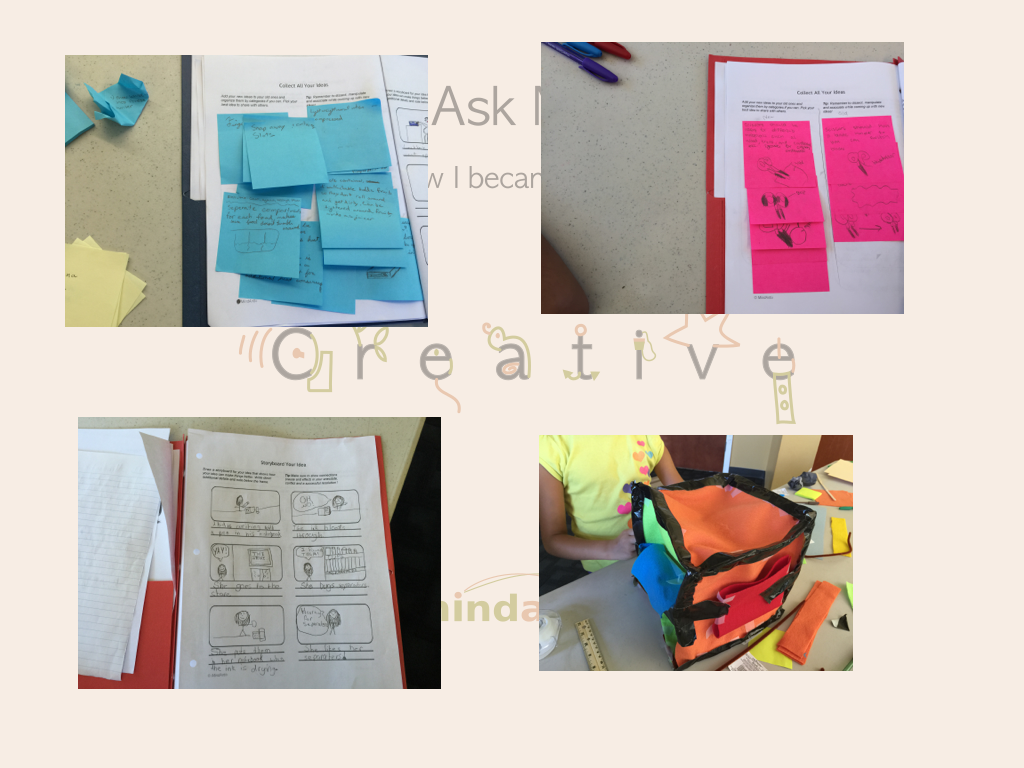We just wrapped up our first summer camp to teach children (8-12yr olds) how to think in more innovative ways. For this camp, we wanted to go beyond simply teaching creativity techniques, to having children actually design objects they use regularly. And since this is the back to school season, we picked “Redesigning School Supplies” as the theme of our camp.
We organized camp activities around a few principles and learned what works well and what doesn’t:
Don’t dumb it down
The neat thing about Creativity is that it is relatively age-agnostic – it’s easy to teach kids core creativity concepts. So, we didn’t skimp on the content. The children learned and experienced creativity techniques and design thinking processes that are typically encountered in graduate level courses.
But we did package the material to be more kid-friendly. For instance, we made a “Minion Game” for the Alternate Uses Task, where a group of minions “discover” an object and the minions take turns in interpreting how that object might be used by humans (all while speaking minion-ese, of course).
Lesson Learned: The campers grasped the concept that we were teaching quickly through play and games, although not everything went perfect. For example, we used the Minion-Game as an opening game, and realized that it wasn’t the best decision. While the kids loved the concept (they asked to play it again the next day), they hadn’t sufficiently warmed up to each other to act silly. In hindsight, this game would have probably worked much better had we scheduled for the second day or later. Our other games fared a lot better, and the children had a great time making their own Twist-a-Story skits, and Crime Scene Investigation movie trailers!
Both group and individual thinking are important
Research has shown that when people brainstorm individually and then bring their ideas to the table for group discussion, the outcome is superior compared to group brainstorming. So, our activities alternated between individual thinking and group brainstorming giving everyone a chance to think on their own.
Lesson Learned: This strategy worked out really well and we ended up with a lot of unique, interesting ideas that children were able to use in their final designs! We will definitely keep this approach going forward.
Make it Relatable
Everyday, we also studied an inventor and their creation to illustrate the concept of the day (like using empathy, making associations, or storyboarding). We also wanted to remove the the psychological barrier that children typically have – that inventing is for adults. So our profiles included young inventors like the 11 yr old girl who invented the crayon holder, to help use up little pieces of crayon.
Lesson Learned: We are not really sure how much (or if) this inspired our campers, but the children did seem to enjoy learning about other inventors. We’ll continue using this because it also served as a good transition activity between games and project work.
We organized the campers into four teams and each team picked a school supply to redesign. By the time camp ended we had some interesting new products – a lunch bag that helps you plan healthy portions, a multi-functional scissors, a universal notebook that minimizes paper cuts, and a better organized and safer backpack. Not bad for the one week we had!
But most importantly, the campers had a great time figuring out their own, unique problems with the objects they picked and applying design thinking to solve them!

